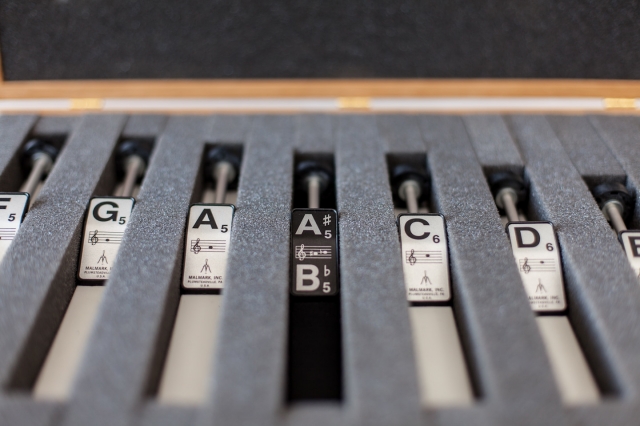Creating Music Ensembles for Individuals with Developmental Disabilities
Interested in setting up group ensembles for individuals with developmental disabilities? We have a unique perspective as music therapists and would love to help!
In music therapy, the therapist helps the client reach a wide variety of goals. In some cases, it is to increase vocalization, develop fine motor movement, or to utilize music as a form of self-expression. In other cases the goal is to learn how to play music and perform new skills in the community.
In our Chime Choir, a group of adults with developmental disabilities is learning how to play music and perform in the community. Each individual plays a chime and works together with the group to create a song. It takes place for about 10 weeks and at the end of the 10 weeks the group will go out into the community and perform. This performance demonstrates all of the hard work and social skills that participants worked on during weekly groups. They work together for a common cause and encourage each other to do their best during the sessions.
Before this group got started, I had questions and uncertainties as I had never attempted a group of this nature. I looked out into the community and tried to find other music therapists who were running similar groups, but it was difficult to find any resources. As a result, we are creating a resource here for those who may be interested in setting up similar groups.
Here are some of the obstacles we faced and how we overcame them:
- Group Size
It is important to have the group small enough in number so that each member can have the opportunity to participate in active music making. We have ranged from 5-11 participants and found pros and cons on both spectrums of group size. If you have low numbers it works well if there are a few individuals who can play two chimes at a time.
In current group, each individual plays one chime because that is the exact number that are available for the compositions that have been created for the group, which has about 10 participants.
- Music Notation
Notation methods vary depending on the abilities of group members. In our case we chose to create notation that included both staff notes and note names below the staff. We have been using MuseScore to compose our pieces. It is a free program and is very user friendly. After we enter the notes for the various songs, we add lyrics to the bottom of each staff with the pitch names under each note. In some cases, we have more than one note playing at a time and we stack these note names vertically on the page. To help the individuals see and recognize that multiple notes are being played, the lower notes in the chord are colored green or blue. We tried coloring the note names red, but it was very hard for the individuals to see and read.
Once the sheet music was finalized, we sent it to a printer to be printed in a larger scale on coreplast board (like politician yard signs material) which increases durability and a clean, crisp look. The bigger the printed version is the better
 .
.
- Helping Group Members Stay Focused
As the groups continue, it is important to reassess and adjust how the individuals of your group are performing. In our situation, that meant adjusting chimes used more frequently to the individuals who needed less prompting and/or can stay focused for a longer amount of time. We still want everyone involved to the best of their abilities!
Visual tracking and focus can be tricky when working with individuals with developmental disabilities. In our case, some of the individuals need extra prompting to play their chime and it seems like they get lost in the letters and notes all in the same area. One way to address this issue is to color code everything. Each note/chime is represented by a different color. This way the clients don’t necessarily have to know how to read or decipher letters if that is a weakness or challenge for them. They would only have to look for a color and when the color appeared they could ring their bell.
Of course, this would not be effective with clients who are colorblind, and another tactic may need to be use in this case, such as putting a certain shape around that individual’s target note. It is important to know and understand the abilities for each individual that is participating in your group so you can play to their strengths to help them and the ensemble be successful together.
You will likely encounter unique challenges of your own when working with individuals with developmental disabilities, but hopefully solutions to a few of the major stumbling blocks have been presented above. We hope to give you ideas to make your groups a success!
–Written by Rachel Kucera, SCMT, MT-BC
–Edited by Jaycie Voorhees, MM, SCMT, MT-BC

